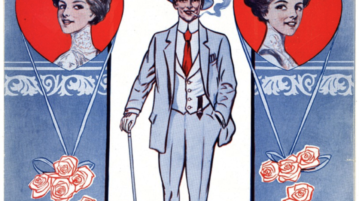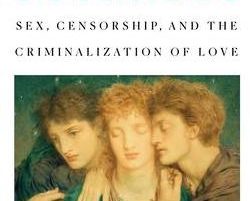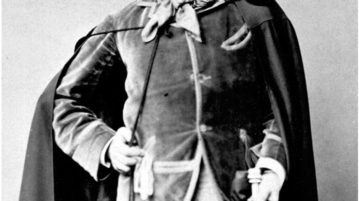The Snubbing of Bertram Cope
Bertram Cope’s Year is clearly indebted to the conventions of romantic comedy and the comedy of manners rather than to the tradition of the bildungsroman or coming-of-age novel.
MoreBertram Cope’s Year is clearly indebted to the conventions of romantic comedy and the comedy of manners rather than to the tradition of the bildungsroman or coming-of-age novel.
More
According to the Oxford English Dictionary, “whoops,” with its variant “Whoopsie Daisy!” is the exclamation uttered when a harmless accident occurs. The earliest citation it provides is a 1925 New Yorker caption to a Peter Arno cartoon. Arno’s first collection, Whoops, Dearie, came out two years later, when he created the Whoops Sisters. As described by the revue impresario Leonard Sillman, they were “short, squat, look-alike sisters with huge snub noses and puffy cheeks and the eyes of sad seals. They always dressed in black.” These late Victorian ladies, Pansy Smiff and Mrs Abagail Flusser, antiquated in their muffs and leg-o’-mutton sleeves, would engage in cheeky and inappropriate behavior (Figure 1).
More
Similarly, Betancourt, [in Byzantine Intersectionality: Sexuality, Gender, and Race in the Middle Ages,] writes with an authentic engagement in an intersectional analysis of race, sexuality, and gender. With his scholarly and political commitment, Betancourt vividly demonstrates that the richness of Byzantium was not just in its gilded surfaces but also in its gender, racial, and sexual diversity—befitting for this crossroads of two continents and myriad cultures and religions.
More
OUTRAGES BEGINS in the rare book room of the Morgan Library in New York, where Naomi Wolf has gone to read the manuscript of an unpublished poem that Victorian critic John Addington Symonds wrote at Oxford after falling in love with a classmate—though you might also say that the book began the day Wolf was still a Rhodes Scholar at Oxford and was handed two volumes of Symonds’ letters by her advisor with the words: “You should read these.” Read them she did, and now, years after publishing such bestsellers as The Beauty Myth and Vagina, Wolf has returned to her doctoral thesis.
More
First, the homosexuality. Proust, Friedländer asserts [in Proustian Uncertainties], was openly gay, though one could argue that this was only true after his parents died, and then only among close friends, and not even all of them. In fact, when Proust’s first book, in Pleasures and Days, came out, he fought a duel with a journalist whose review implied that Proust was an “invert.” Of course, Proust had … and always knew that homosexuality would be one of the main subjects of his novel; he was even afraid that someone else would beat him to it.
More
Since the 1960s, it has been standard dogma that gender is binary only as a result of cultural enforcement, while sex is the biological dimorphism of male and female.
More
On Facebook, shockingly enough, I blocked my own godson during the last election race. I was stunned to learn that he is a right-winger who continually posts smear campaigns against the Democrats, shamelessly echoing propaganda from shady websites. As I happen to have inside knowledge of this guy’s own personal behavior, I know he has no right to smear anyone else’s, especially with lies. But now comes the pressing question: having blocked my own godson, do I still send him a birthday card every year?
More
At age 24, he was already known for his Æsthetic affectations and pithy quips. Wilde was perhaps the first person to be famous for being famous.
More
IN 1948, Gore Vidal published his groundbreaking novel The City and the Pillar, which depicted a brief affair between two high school boys and its tragic repercussions. The effect…More

When gay literature became popular in the 1970s, the novels were all about urban gays living in the fast lane. Now we have books about gays living in the sticks.
More